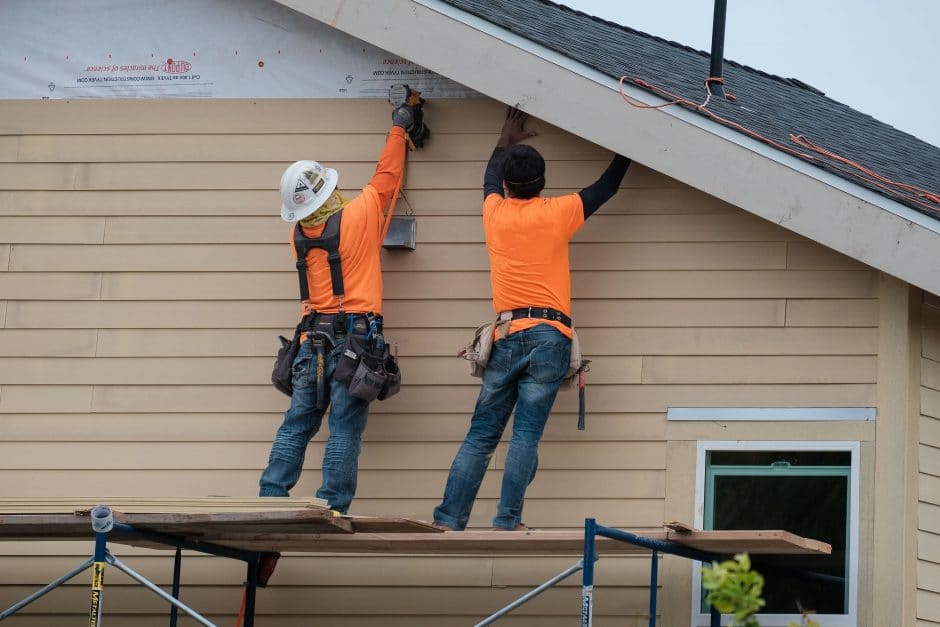How to Identify Siding Damage: Signs You Shouldn’t Ignore
Siding plays a crucial role in protecting your home from the
elements, enhancing curb appeal, and improving energy efficiency. However, over
time, exposure to weather, moisture, and pests can cause damage that, if left
unaddressed, can lead to costly repairs. Knowing the signs of siding damage can
help you take action before small issues become major problems.
Visible Cracks and Gaps
One of the most obvious signs of siding damage is the
presence of cracks or gaps. These openings allow moisture to seep in, which can
lead to mold growth, rotting wood, or even structural damage. Small cracks may
seem harmless, but they can widen over time, especially during extreme
temperature fluctuations. If you notice any gaps, it's essential to repair or
replace the affected sections to prevent further deterioration.
Warping or Bubbling
Siding should lay flat against your home, providing a smooth
and even appearance. If you see sections that are bulging, warping, or
bubbling, it could indicate underlying moisture problems. Water trapped behind
siding can cause wood to swell or lead to mold and mildew growth. This type of
damage often requires a closer inspection to determine if only the siding is
affected or if there is deeper structural damage.
Fading or Discoloration
While fading is a natural occurrence due to prolonged
exposure to the sun, excessive discoloration can signal that your siding is
reaching the end of its lifespan. Certain materials, like vinyl, have built-in
UV protection, but once that protection wears off, the siding becomes more
vulnerable to cracking and brittleness. If your siding has uneven patches of
fading, it might be time to consider replacement.
Peeling Paint or Loose Wallpaper Inside the Home
Sometimes, siding damage can manifest indoors. If you notice
peeling paint, bubbling wallpaper, or moisture stains on your walls, it could
mean that water is seeping in through damaged siding. This is a serious issue,
as moisture infiltration can lead to mold growth, which poses health risks and
can weaken the structural integrity of your home.
Mold, Mildew, or Fungus Growth
The presence of mold, mildew, or fungus on your siding,
especially near the seams, could indicate that moisture is trapped behind it.
While some mildew buildup can be cleaned off, persistent growth is a sign of
deeper moisture retention, which may require professional assessment. If left
untreated, mold can spread to the interior of your home, creating unhealthy
living conditions.
High Energy Bills
Siding plays a significant role in insulating your home. If
you notice a sudden increase in your energy bills, it could be due to
compromised siding that is no longer effectively keeping heat in during the
winter or out during the summer. Damaged siding allows drafts to enter, making
it harder for your heating and cooling systems to maintain a comfortable indoor
temperature.
Insect or Pest Infestations
Certain types of siding, particularly wood, are prone to
pest infestations. Termites, carpenter ants, and other insects can burrow into
the siding and weaken its structure. If you notice small holes, sawdust-like
residue, or hear faint rustling sounds within the walls, it could be a sign
that pests have made their way inside. Addressing this issue promptly can
prevent further damage and protect the rest of your home.
Rotting or Soft Spots
Wood siding is especially susceptible to rot when exposed to
excessive moisture. If you press against a section of your siding and it feels
soft or crumbles under pressure, it’s a clear indication of rot. Rotted siding
loses its ability to protect your home and must be replaced as soon as possible
to prevent further deterioration.
Loose or Missing Panels
Strong winds, storms, or general wear and tear can cause
siding panels to become loose or even fall off entirely. Missing panels expose
the underlying structure of your home to the elements, leading to water damage,
insulation problems, and even pest infestations. Regularly inspecting your
siding after severe weather can help you catch any loose or missing panels
before they become a bigger issue.




No comments:
Post a Comment